Abstract
A method for studying inhibitors of the contact stages of blood coagulation is described. A number of positively charged substances were shown to inhibit the contact stages. The inhibitory substances include spermine, cytochrome c, ribonuclease, and lysozyme. The inhibitory effect of these substances was neutralized by the addition of an activated plasma thromboplastin antecedent, factor XI, (PTA) fraction. Other positively charged substances including protamine, hexadimethrine, polylysine, polyornithine, methylene blue, and ortho-toluidine blue also inhibited the contact stages of coagulation, but the inhibitory effect on coagulation was not neutralized by the activated PTA fraction. Negatively charged substances such as heparin and insulin did not inhibit the contact stages of coagulation.
Cytochrome c inhibited Celite adsorption of a partially purified Hageman factor fraction, and cytochrome, ribonuclease, spermine, and lysozome inhibited the adsorption of Hageman factor from PTA-deficient plasma. Very much smaller quantities of Celite completely adsorbed Hageman factor from the fraction rather than from whole plasma, which suggested the possibility that plasma contains an inhibitor or inhibitors of Hageman factor adsorption.
Furthermore cytochrome c, spermine, ribonuclease, and lysozyme inhibited the coagulant activity of the following activators of the Hageman and PTA factors: Celite, kaolin, sodium stearate, ellagic acid, and skin. It is suggested that negatively charged sites on these activators are critical for adsorption and activation and that inhibition results from neutralization of the negatively charged sites by the adsorbed inhibtor. Tests with polylysine polymers indicate that inhibitory activity is directly related to molecular size over the molecular weight range of 4000 to 100,000.
Full text
PDF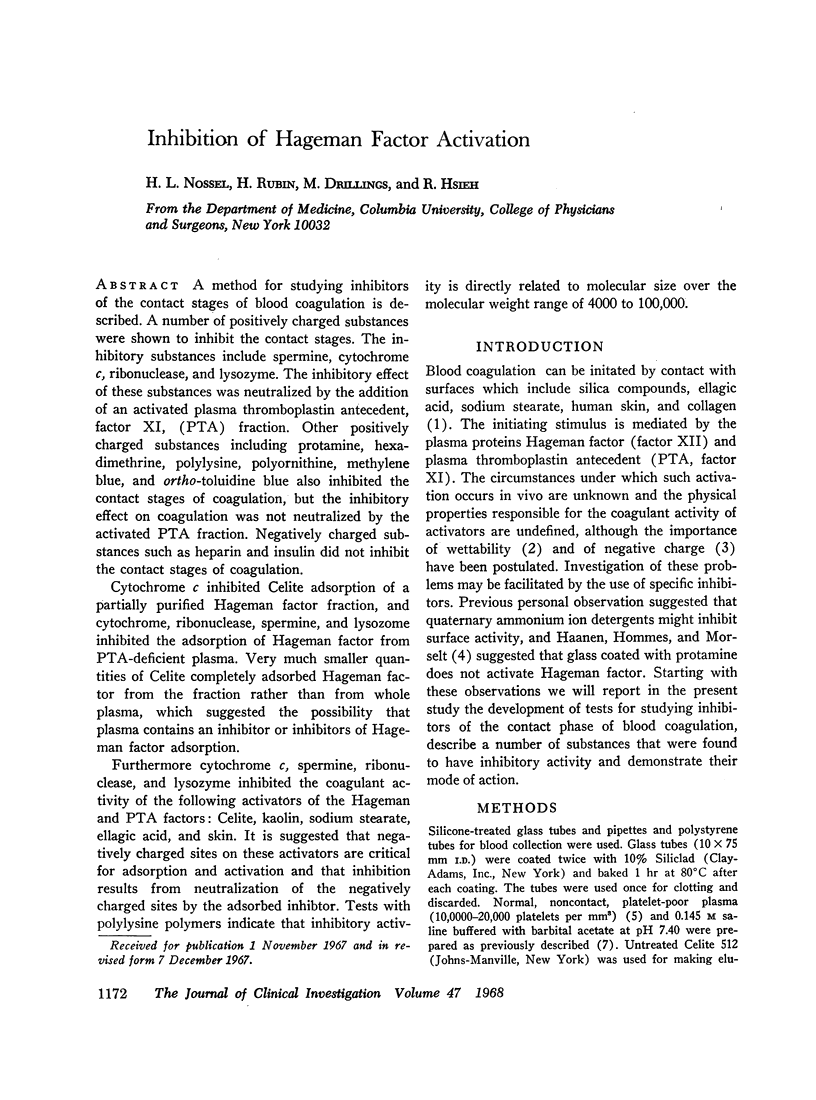
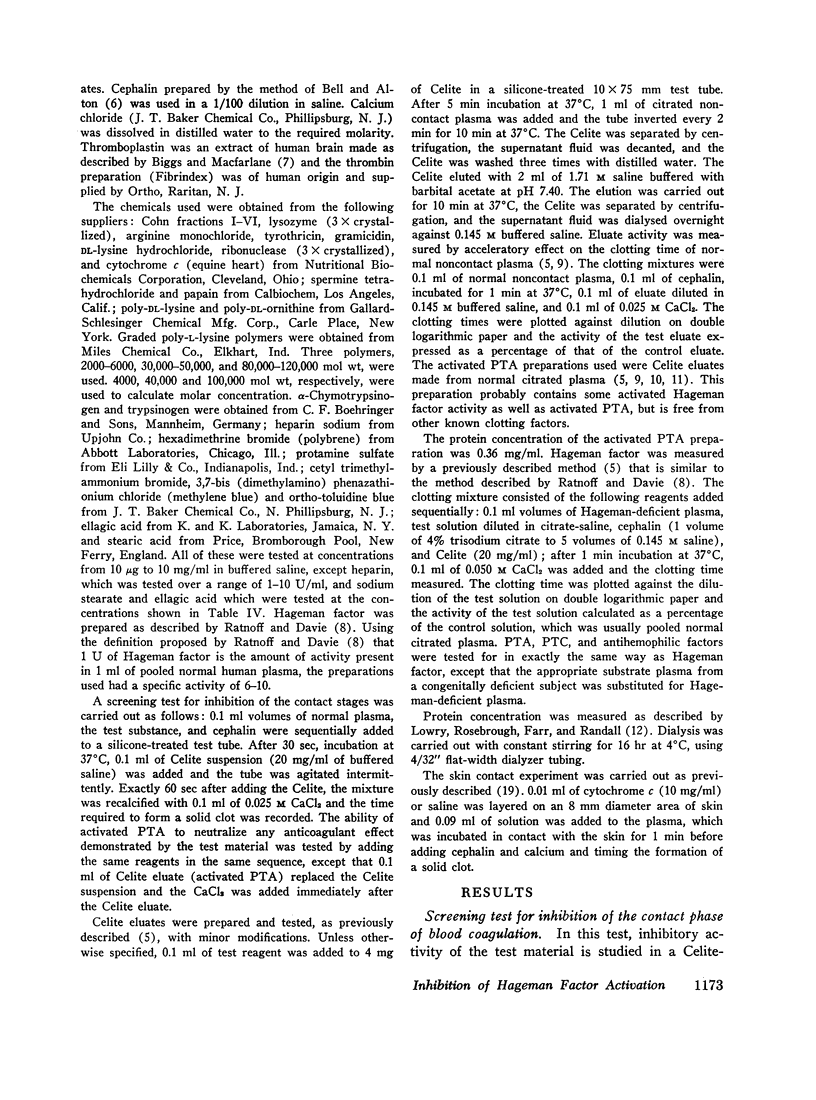
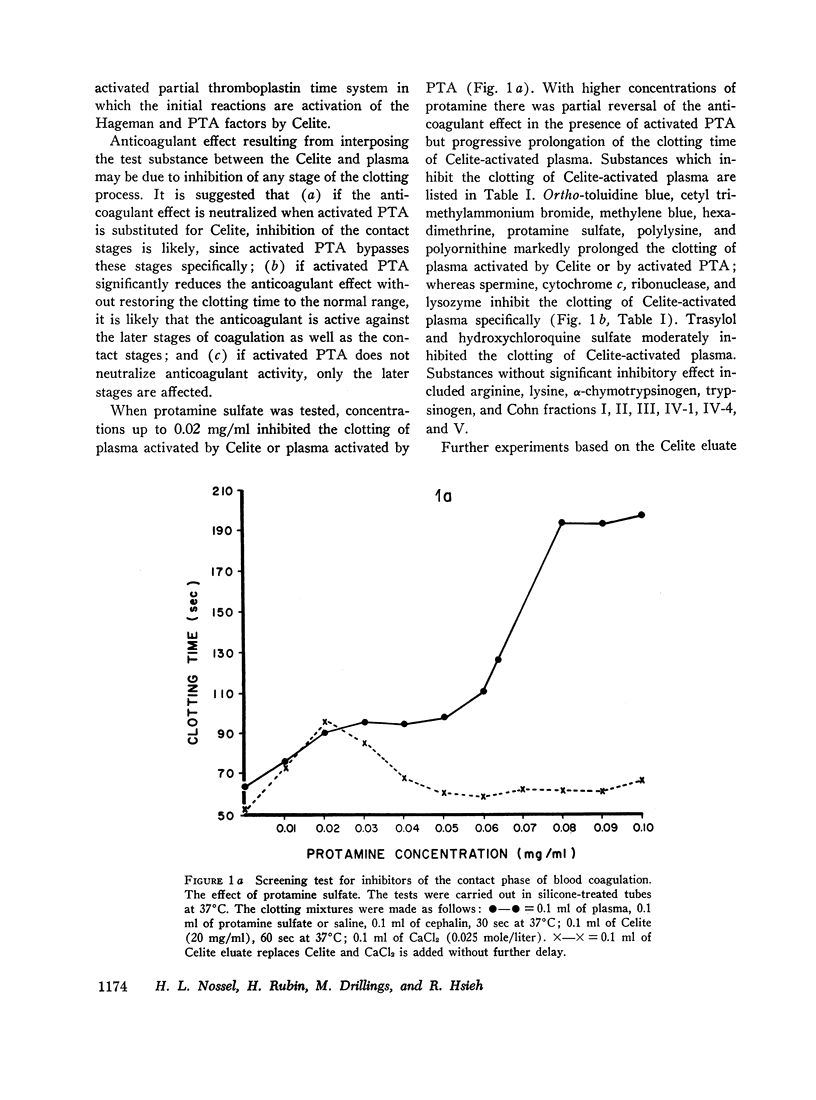
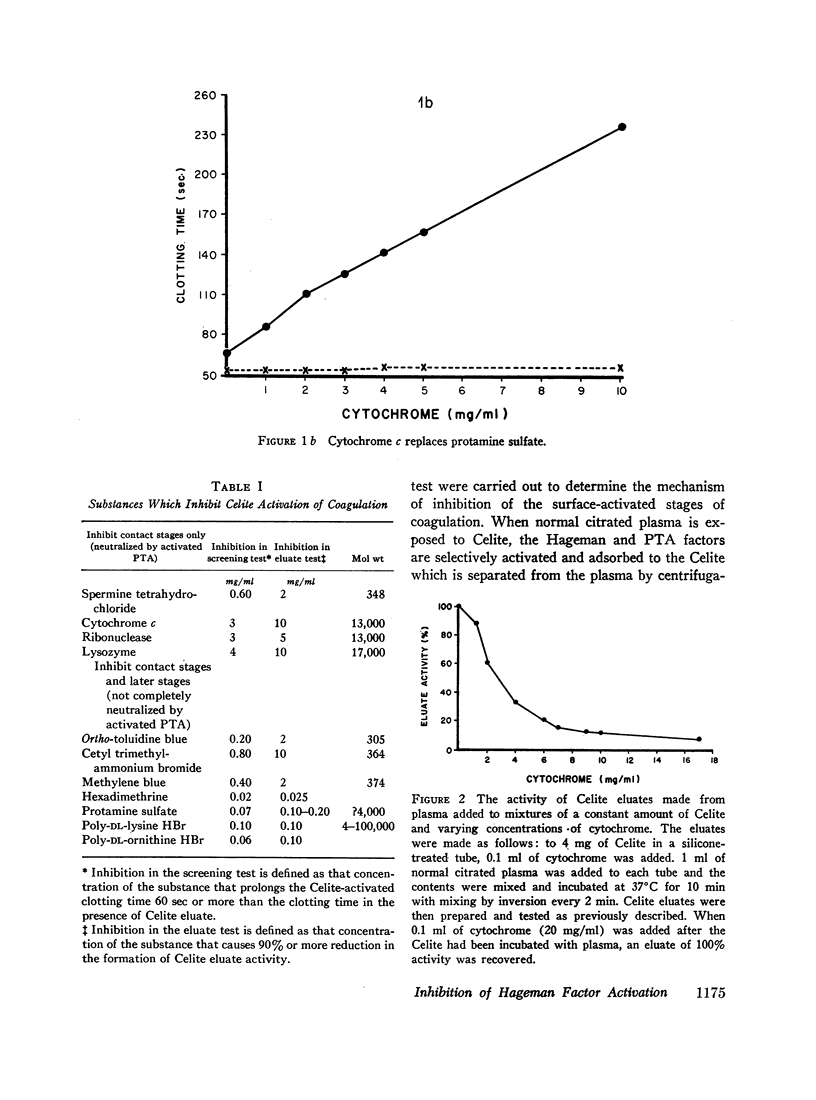
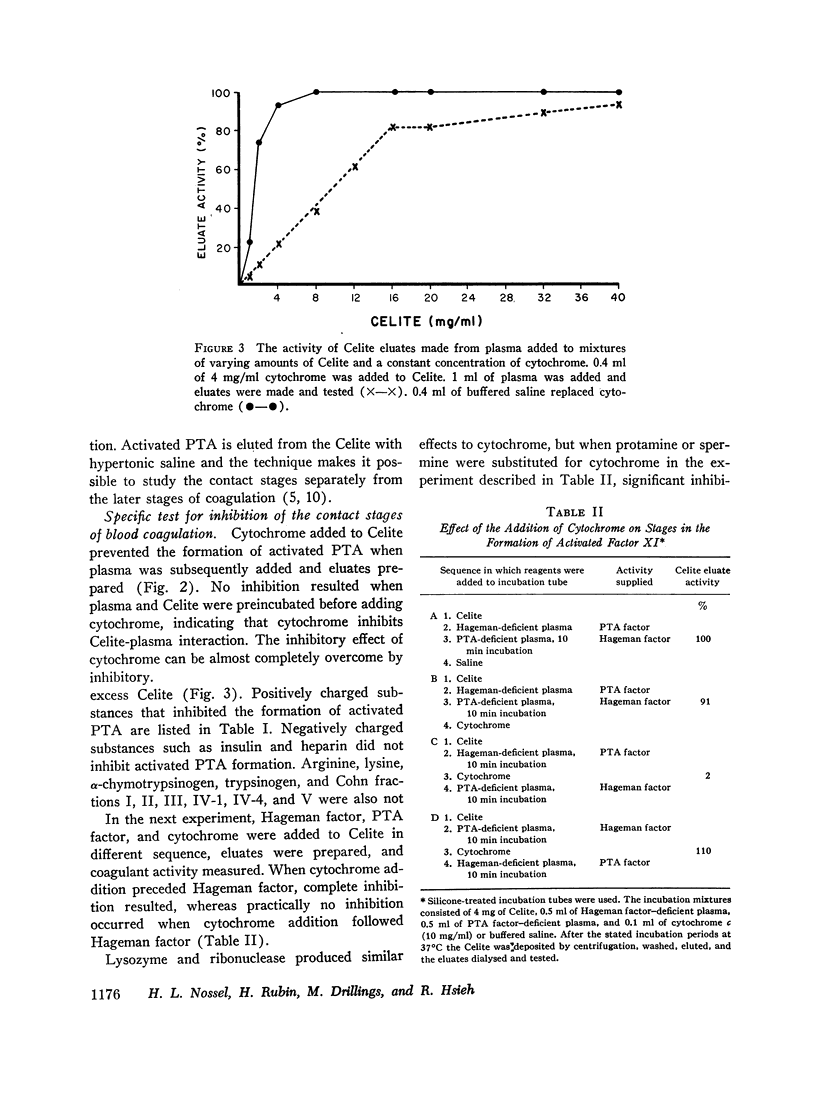
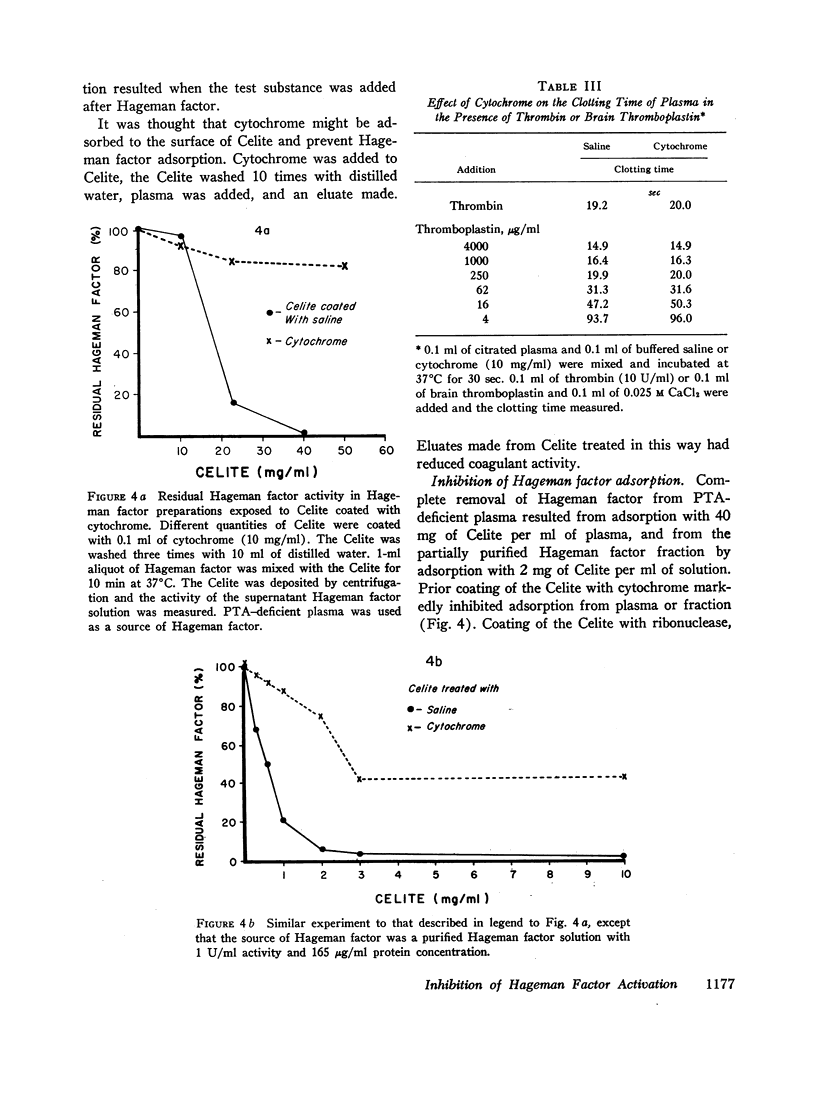
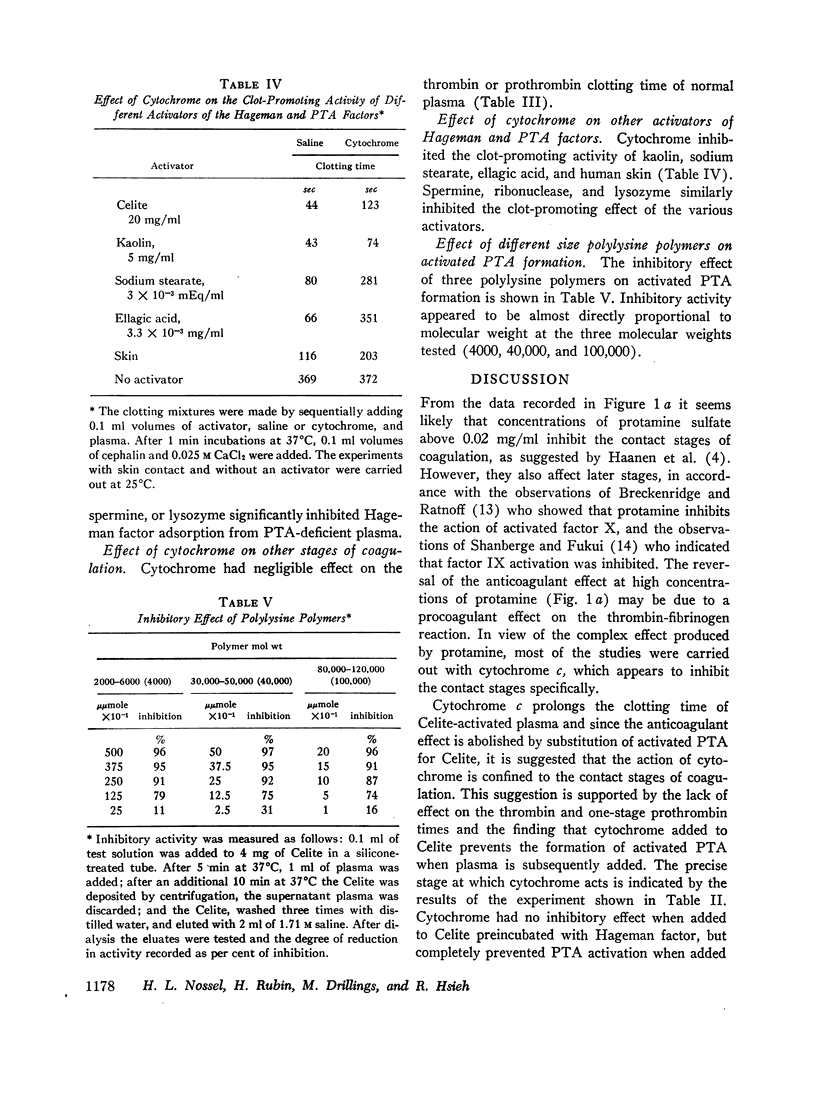
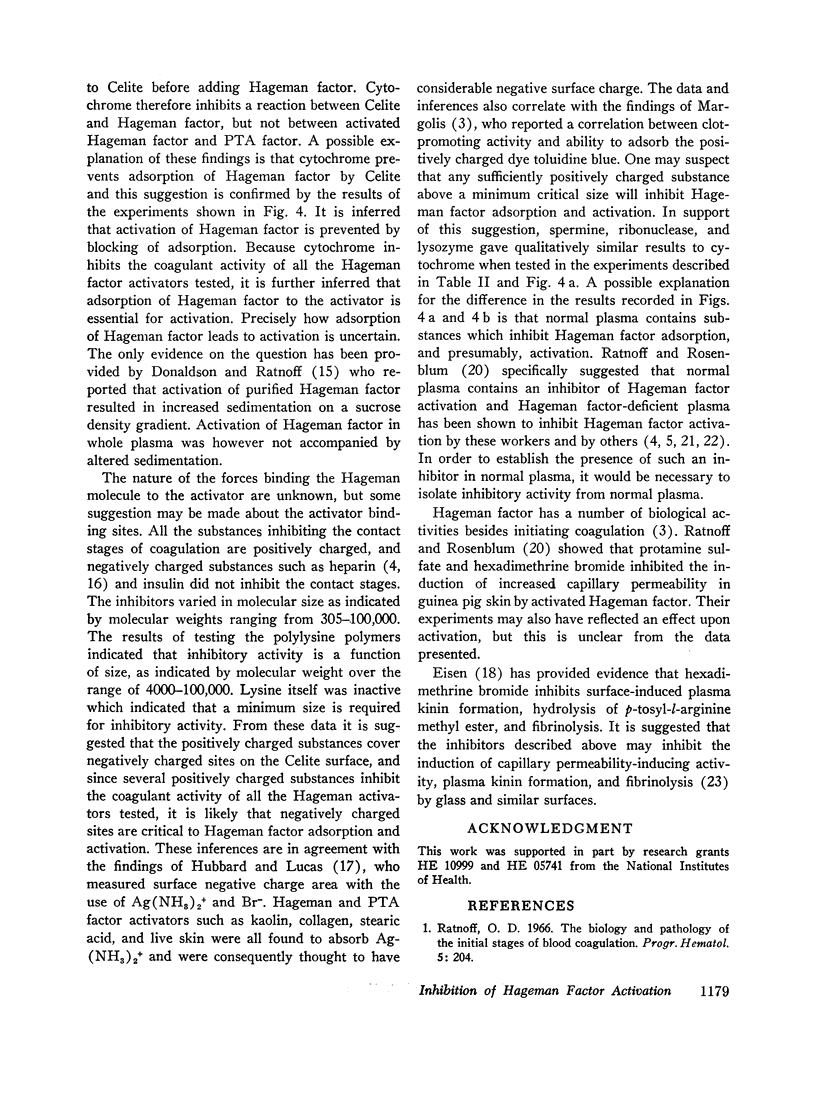
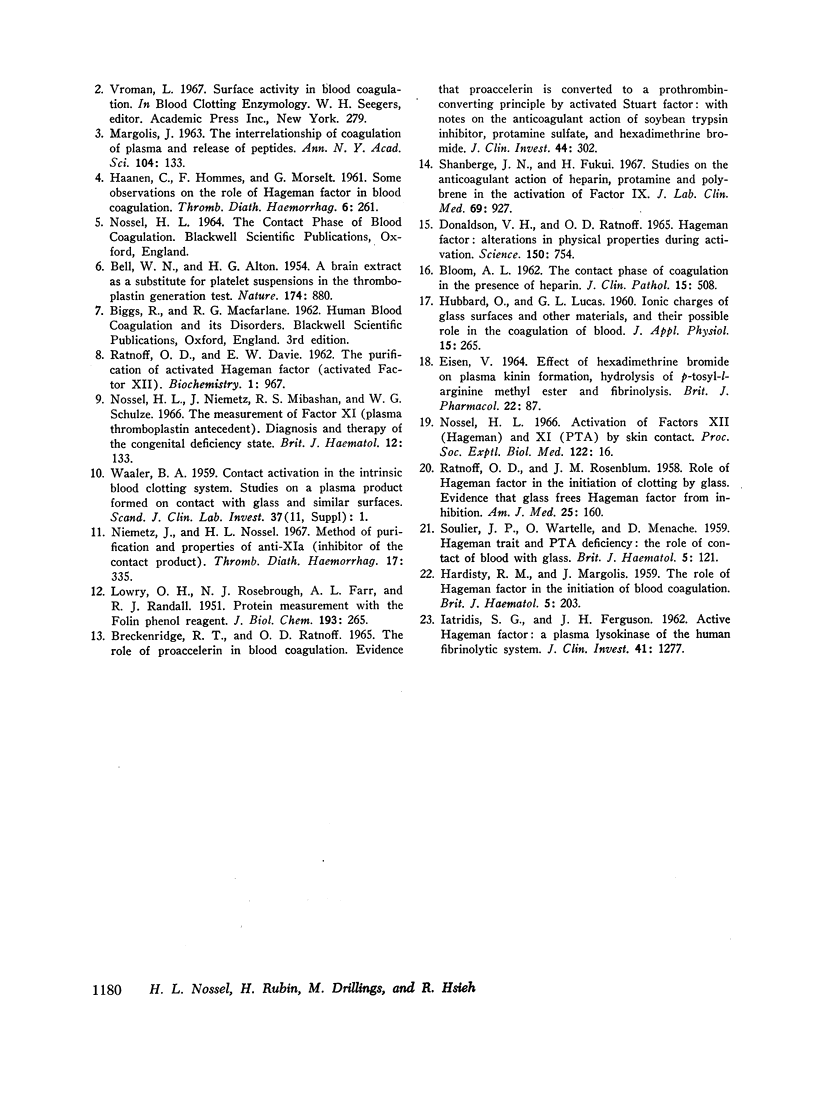
Selected References
These references are in PubMed. This may not be the complete list of references from this article.
- BELL W. N., ALTON H. G. A brain extract as a substitute for platelet suspensions in the thromboplastin generation test. Nature. 1954 Nov 6;174(4436):880–881. doi: 10.1038/174880a0. [DOI] [PubMed] [Google Scholar]
- BLOOM A. L. The contact phase of coagulation in the presence of heparin. J Clin Pathol. 1962 Nov;15:508–510. doi: 10.1136/jcp.15.6.508. [DOI] [PMC free article] [PubMed] [Google Scholar]
- Breckenridge R. T., Ratnoff O. D. The Role of Proaccelerin in Human Blood Coagulation. Evidence that Proaccelerin Is Converted to a Prothrombin-converting Principle by Activated Stuart Factor: With Notes on the Anticoagulant Action of Soybean Trypsin Inhibitor, Protamine Sulfate, and Hexadimethrine Bromide. J Clin Invest. 1965 Feb;44(2):302–314. doi: 10.1172/JCI105144. [DOI] [PMC free article] [PubMed] [Google Scholar]
- Donaldson V. H., Ratnoff O. D. Hageman factor: alterations in physical properties during activation. Science. 1965 Nov 5;150(3697):754–756. doi: 10.1126/science.150.3697.754. [DOI] [PubMed] [Google Scholar]
- EISEN V. EFFECT OF HEXADIMETHRINE BROMIDE ON PLASMA KININ FORMATION, HYDROLYSIS OF P-TOSYL-L-ARGININE METHYL ESTER AND FIBRINOLYSIS. Br J Pharmacol Chemother. 1964 Feb;22:87–103. doi: 10.1111/j.1476-5381.1964.tb01546.x. [DOI] [PMC free article] [PubMed] [Google Scholar]
- HAANEN C., HOMMES F., MORSELT G. Some observations on the role of Hageman factor in blood coagulation. Thromb Diath Haemorrh. 1961 Sep 1;6:261–269. [PubMed] [Google Scholar]
- HARDISTY R. M., MARGOLIS J. The role of Hageman factor in the initiation of blood coagulation. Br J Haematol. 1959 Apr;5(2):203–211. doi: 10.1111/j.1365-2141.1959.tb04026.x. [DOI] [PubMed] [Google Scholar]
- HUBBARD D., LUCAS G. L. Ionic charges of glass surfaces and other materials, and their possible role in the coagulation of blood. J Appl Physiol. 1960 Mar;15:265–270. doi: 10.1152/jappl.1960.15.2.265. [DOI] [PubMed] [Google Scholar]
- IATRIDIS S. G., FERGUSON J. H. Actie Hageman factor: a plasma lysokinase of the human fibrinolytic system. J Clin Invest. 1962 Jun;41:1277–1287. doi: 10.1172/JCI104590. [DOI] [PMC free article] [PubMed] [Google Scholar]
- LOWRY O. H., ROSEBROUGH N. J., FARR A. L., RANDALL R. J. Protein measurement with the Folin phenol reagent. J Biol Chem. 1951 Nov;193(1):265–275. [PubMed] [Google Scholar]
- MARGOLIS J. The interrelationship of coagulation of plasma and release of peptides. Ann N Y Acad Sci. 1963 Feb 4;104:133–145. doi: 10.1111/j.1749-6632.1963.tb17659.x. [DOI] [PubMed] [Google Scholar]
- Niemetz J., Nossel H. L. Method of purification and properties of anti-XIa (inhibitor of the contact product). Thromb Diath Haemorrh. 1967 May 31;17(3-4):335–348. [PubMed] [Google Scholar]
- Nossel H. L. Activation of factors XII (Hageman) and XI (PTA) by skin contact. Proc Soc Exp Biol Med. 1966 May;122(1):16–17. doi: 10.3181/00379727-122-31038. [DOI] [PubMed] [Google Scholar]
- Nossel H. L., Niemetz J., Mibashan R. S., Schulze W. G. The measurement of factor XI (Plasma thromboplastin antecedent). Diagnosis and therapy of the congenital deficiency state. Br J Haematol. 1966 Mar;12(2):133–144. doi: 10.1111/j.1365-2141.1966.tb05617.x. [DOI] [PubMed] [Google Scholar]
- RATNOFF O. D., DAVIE E. W. The purification of activated Hageman factor (activated factor XII). Biochemistry. 1962 Nov;1:967–975. doi: 10.1021/bi00912a005. [DOI] [PubMed] [Google Scholar]
- RATNOFF O. D., ROSENBLUM J. M. Role of Hageman factor in the initiation of clotting by glass; evidence that glass frees Hageman factor from inhibition. Am J Med. 1958 Aug;25(2):160–168. doi: 10.1016/0002-9343(58)90023-8. [DOI] [PubMed] [Google Scholar]
- Ratnoff O. D. The biology and pathology of the initial stages of blood coagulation. Prog Hematol. 1966;5:204–245. [PubMed] [Google Scholar]
- SOULIER J. P., WARTELLE O., MENACHE D. Hageman trait and PTA deficiency; the role of contact of blood with glass. Br J Haematol. 1959 Jan;5(1):121–138. doi: 10.1111/j.1365-2141.1959.tb04017.x. [DOI] [PubMed] [Google Scholar]
- Shanberge J. N., Fukui H. Studies on the anticoagulant action of heparin, protamine, and Polybrene in the activation of factor IX. J Lab Clin Med. 1967 Jun;69(6):927–937. [PubMed] [Google Scholar]
- WAALER B. A. Contact activation in the intrinsic blood clotting system; studies on a plasma product formed on contact with glass and similar surfaces. Scand J Clin Lab Invest. 1959;11(Suppl 37):1–133. [PubMed] [Google Scholar]


